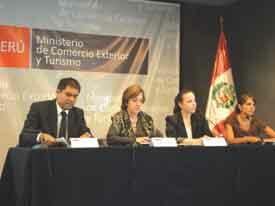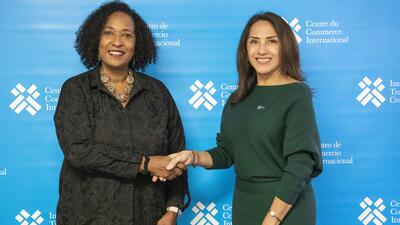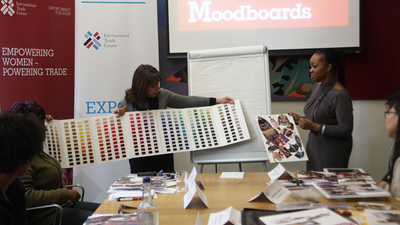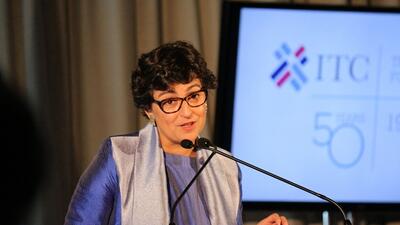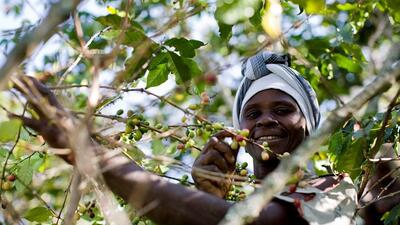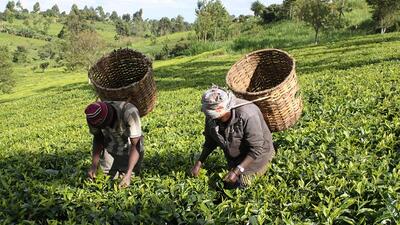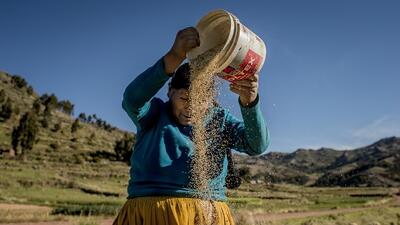ITC NTM survey in Peru
Expanding the scope of discovery beyond NTMs and towards procedural obstacles and inefficiencies in the trade-related business environment provides an even richer picture. The combined assessment of regulations and their implementation is the essential basis for further evaluation of government action and effects on welfare. The survey in Peru reveals that both exporters and importers face NTMs and other trade impediments. Exporters of agricultural products tend to be more affected than exporters of manufactured goods. While NTMs were identified on the side of partner countries, exporters have also encountered obstacles domestically in Peru. Domestic costs of NTMs and other obstacles reduce the commercial viability of Peruvian companies when competing with foreign companies that may face lower costs at home. The same holds true for additional costs on the import of inputs for domestic production and subsequent export. To boost the competitiveness of Peruvian companies in international trade it is not only essential to address trade policies with foreign partners, but also to minimize any unnecessary costs and frictions at home.
In line with the ITC NTM programme objective to identify policy options together with national stakeholders, the preliminary conclusions of the Peru survey were supplemented by interviews with Peruvian trade and sector experts. A stakeholder meeting was convened in February 2012 to present and validate the survey results, discuss the public sector perspective, and explore short- to long-term policy recommendations. Policy options were then confirmed at both the domestic and international level.
Policy options for domestic action
1. Strengthen specialized technical agencies and establish a national system of quality
Technical requirements and conformity assessment procedures are the predominant type of NTMs reported by Peruvian exporting and importing companies in all sectors. The increasing application of such measures and growing export as well as import quantities have created more demand for testing and certification services. The Peruvian government aims to double exports within the next five years, so institutional capacities need to be strengthened. The NTM survey identified bottlenecks in specialized technical agencies that are responsible for emitting technical and sanitary certificates. At the stakeholder meeting, two of these agencies confirmed a lack of financial and human resources. More resources for the technical agencies are indispensable. The Ministry of Foreign Commerce and Tourism (MINCETUR) needs to take a proactive approach in working with the Ministry of Economy and Finance (MEF) and with the ministries that govern the specialized agencies. The MEF Competitiveness Agenda 2012-2013 proposed a National System of Quality that delivers a basis for cooperation.
The National Institute for the Defense of Competition and Protection of Intellectual Property (INDECOPI) is an important player in this initiative and in the areas of normalization/harmonization, metrology and accreditation. At the stakeholder meeting, INDECOPI pointed out that the national accreditation body is itself not internationally accredited. Efforts to obtain international accreditation need to be intensified. The technical agencies and INDECOPI may seek to harmonize domestic and international standards. This will facilitate trade by lowering the barrier companies experience when moving from domestic sales to exports. The agencies should also aim to increase participation in the international definition of standards.
2. Further integrate procedures into Peru's Single Window for Foreign Trade
Customs is the agency in Peru where most procedural obstacles were reported as every trading company deals with customs procedures. After the NTM survey, the National Superintendence of Tax Administration (SUNAT) implemented the Single Window to reduce paperwork and integrate procedures through electronic networks. Integrating certificates of origin is scheduled for the second half of 2012. Discussions at the stakeholder meeting acknowledged improvements, but stressed that the survey results are still valid. While the Single Window is a fundamental platform for cooperation, agencies need to work together more closely to reach its potential.
3. Streamline import and export inspections
Procedural obstacles related to inspections in Peru represented a major share of private sector complaints. Companies lamented delays and that container checks were often performed at night or at dawn, making it difficult for company staff to attend. Responsible agencies hinted at their own bottlenecks; only 5% of export and 7%-8% of import consignments undergo physical inspection. The Peruvian Sanitary and Phytosanitary Agency (SENASA) controls all restricted sensitive goods and checks cargo between 8 am and 5 pm. Customs and the Peruvian Sanitary Agency for Fisheries/Institute of Fishery Technologies (SANIPES/ITP) pointed out that the fast pace of international trade required a round-the-clock schedule of inspections. Justifying export inspections in Peru, experts who were surveyed stated that the level of rejected cargo in destination countries was high for some products, for example for agricultural products exported to the United States. Rejection in a partner country is costly and can harm the reputation of Peruvian exporters.
More financial and human resources are required as trade growth puts further pressure on institutions. Customs and specialized technical agencies also need to collaborate better to streamline inspections. The Peruvian social security agency (SNP) said the history of compliance of an exporter should be taken more readily into account, suggesting public agencies should also seek dialogue and closer collaboration with the private sector.
4. Improve access to NTM-related information and extend company-level capacity building
The stakeholder meeting confirmed that companies lack access to information about NTMs and procedures. SUNAT reported that 97% of infringements found during inspections are due to the ignorance of the trading company and are not an attempt at trafficking. SENASA and SANIPES/ITP said their customers are unaware of exact technical requirements until they ask for certification for a market. Improving trade information systems is key. The Integrated Information System on Foreign Trade (SIICEX), which PromPerú, the Commission on the Promotion of Peru for Export and Tourism, introduced after the survey period, is an excellent basis for this. Integrating additional information sources to SIICEX, such as the information portals of SANIPES/ITP and those of partner countries, is a next step. The NTM module of the ITC Market Access Map application is also a valuable source of information.
A systematic and extended programme of capacity building at the company-level should accompany information improvement. With appropriate resources, PromPerú can lead capacity building. Private sector participation in SIICEX and capacity building is also needed, while exporters' associations can provide information and training that public agencies are less capable of supplying.
5. Strengthening the role of the regions and decentralization
Many problems reported by enterprises in regions other than the Peruvian capital of Lima refer to a lack of trade-related infrastructure. In Lima, specialized technical institutions, ports and logistics infrastructure are overloaded. The regions have massive export potential, but are hindered by the centralized system that in many instances requires going through Lima. Beyond strengthening institutions and infrastructure in general, a better balance between Lima and the regions is crucial. Decentralization will benefit the regions and alleviate bottlenecks in the capital.
Policy options for international negotiation
While domestic action can alleviate the challenges of many NTMs, some measures require negotiation with partner countries. Trade agreements provide bilateral, regional and multilateral platforms for negotiation of general and specific NTM issues and policy options.
1. NTM provisions in trade agreements and the multilateral trade system
Trade agreements should incorporate provisions on mutual recognition of TBTs and SPS measures. In recent years, Peruvian authorities have signed phytosanitary protocols that have opened market access for Peruvian export products. While the Ministry of Foreign Relations and MINCETUR deal with international negotiations, the organized private sector can work with partner companies in destination markets to lobby for trade facilitation and transparent rules. Peru should also continue its participation at the multilateral level, taking part, for example, in World Trade Organization (WTO) committees on SPS measures and TBTs.
2. Two examples of specific NTMs and venues for solutions: Novel food and restrictions applied by the Bolivarian Republic of Venezuela
Market access for natural products unknown to the EU market is restricted under the 'novel food' regulation. Products originating from Peru's biodiversity have great export potential, as high growth rates in other markets have demonstrated. In a joint effort with other Latin American countries, Peru has achieved some success in contesting the regulation at the WTO SPS committee. Despite changes in the EU regulation, the issue has not been resolved. PromPerú continues to work on the issue with a public-private group at the committee.
The Bolivarian Republic of Venezuela demands a 'certificate of no national production or insufficient production' to grant market access for several products. Further, the issuing of foreign exchange licences by the Commission for the Administration of Currency Exchange (CADIVI) is reported to be unpredictable. Both measures entail long delays, excessive documentation and informal payments. MINCETUR recently raised these issues during negotiation of a partial-scope trade agreement with the Bolivarian Republic of Venezuela.
3. Regional priorities
Priorities of political attention should be the largest markets of the United States and EU, and regional partner countries, especially the Bolivarian Republic of Venezuela and MERCOSUR (the Southern Common Market made up of Argentina, Brazil, Paraguay, and Uruguay). While the United States and the EU are crucial due to their market size, the Bolivarian Republic of Venezuela and MERCOSUR partners are destination markets in which NTMs were frequently reported. Less restrictive markets are in the Andean Community of Nations and emerging China.
Outlook
The NTM survey analysis provides a comprehensive picture of the challenges that Peruvian exporters and importers encounter. The stakeholder meeting then initiated public-private dialogue and led to policy options that now need to be implemented. This requires ministries, public agencies and the private sector to work together. Cooperation should be close, continuous and institutionalized to ensure policy actions are well defined and their outcomes regularly monitored and evaluated.




